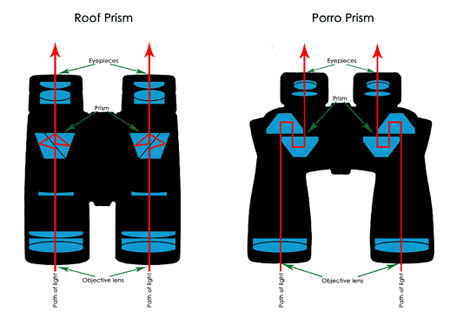Binoculars

Binoculars are one of the most overlooked tools for astronomical observing even thought they are the easiest to use as well as the most comfortable. They are idea for observing open and globular star clusters and asterisms, along with the larger and brighter emission nebulas and galaxies. Even brighter sized comets are in play. I make it a point to always bring a pair when I am imaging in the field at a remote site so I’ll have something to do rather than just staring at my PHD2 guide graph.
Binoculars come in 2 types, Porro Prism and Roof Prism. These different prism systems allow the device to fold the light path and provide a right side up view for the viewer. Porro prism systems are the classic standard binocular system that most folks are used to seeing; they provide excellent viewing at a low cost, usually less than $300. Roof prisim systems, while more popular because of their compact size and generally lighter weight are much more expensive; you will see these devices start around $400 and increase from there.

You will also note binoculars are defined by a pair of numbers separated by an “x” such as 15x70 or 20x80. These numbers define the magnification and aperture size of the binoculars. The first number is the magnification. In the case of 15x70, a car positioned 150 meters away from you will be see as if it is only 10 meters away. That will make features you can see at 150 meters much more visible through these binoculars.
The second number is the size of the aperture of the twin front objective lenses of the binoculars in millimeters. As with telescope optical tubes, aperture is king; the larger the aperture, the more light will be gathered for you to view.
A trick to use to compare one set of binoculars to another is to multiply the 2 numbers that define each pair and compare them. If we compare the 15x70 pair with the 20x80 pair, we will have 1,050 and 1,600. On first glance, it appears the 20x80 pair is clearly superior but there are a couple of other considerations to think about;
- The 20x80 pair will be much heavier to use and will require a tripod for effective viewing. If portability and ease of use is important for your choice of equipment, these binoculars could present problems.
- As magnification goes up, the field of view decreases. The 15x70 binoculars will show you a larger section of sky than the 20x80 binoculars. Again, something to consider.
For more info, consult The Backyard Astronomer’s Guide by Terence Dickenson and Alan Dyer.
